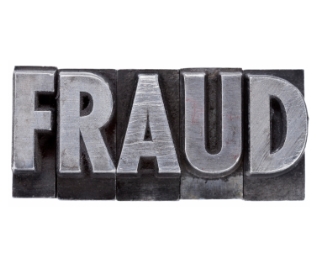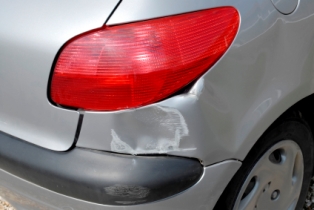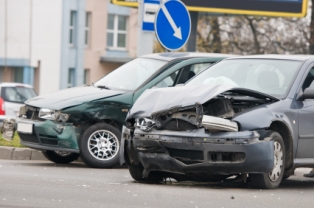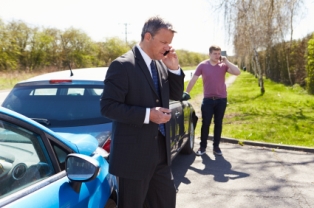Top 5 car insurance scams to avoid (Slideshow)
 If you get into a minor car crash, such as a rear-end collision, one of your first thoughts may not be to suspect fraud.
If you get into a minor car crash, such as a rear-end collision, one of your first thoughts may not be to suspect fraud.
However, you should consider it. In the U.S., fraud is the second most costly white-collar crime after tax evasion, according to the National Insurance Crime Bureau (NICB).
Car insurance scams, such as staged accidents, often involve an entire organized crime ring. Its members might include a number of drivers, passengers with fake or exaggerate injuries, and doctors who create false claims for treatment after the incident. Ten percent or more of property and casualty insurance claims are fraudulent, according to the NICB.
For innocent drivers, these scams can add blemishes to a driving record and increase premiums. They might also result in injuries or even death.
Here are five of the top car insurance scams to be aware of, and what you can do to avoid falling victim to them.
—-
1. Forced rear-ending
 In this scam, the car ahead of you stops suddenly, and you crash into the back of the vehicle. Even though the driver of the front vehicle staged the accident, rear-end collisions are usually considered to be the fault of the driver in back.
In this scam, the car ahead of you stops suddenly, and you crash into the back of the vehicle. Even though the driver of the front vehicle staged the accident, rear-end collisions are usually considered to be the fault of the driver in back.
The passengers in the car you hit might complain of neck and back pain. In some cases, occupants of the other car may file claims for injuries and car damage.
Be wary of passengers or drivers who, after getting in the accident, appear to be uninjured – but when the police arrive, they instantly start complaining about their injuries.
Your location may play a role in the likelihood of coming into a scam while on the road. California, Florida, and Texas were the states with the highest number of questionable insurance claims in 2012, according to the NICB.
To avoid a collision, “Use the three-second rule,” says David Bakke, editor at Money Crashers, a personal finance site. Choose a landmark ahead of you. When the car in front of you reaches this point, start counting. You’ll want to reach three before you pass the same point.
—-
2. Forced head-on crash
 This scam involves two vehicles, and often occurs on busy city streets. On a two-way street, one car parks and blocks traffic coming from the same direction. Your car approaches the parked vehicle that is blocking traffic and in order to pass the car, you have to pull into the other lane of the street. The lane, however, has oncoming traffic.
This scam involves two vehicles, and often occurs on busy city streets. On a two-way street, one car parks and blocks traffic coming from the same direction. Your car approaches the parked vehicle that is blocking traffic and in order to pass the car, you have to pull into the other lane of the street. The lane, however, has oncoming traffic.
When you move into the oncoming traffic lane to pass the parked car, another car approaches you from the opposite direction. This car hits your vehicle, resulting in a head-on collision. Since you were driving against traffic when the crash occurred, it will appear that you are at fault.
If you have any suspicion of fraud in a crash, make sure the police officer knows, says John Moran, owner of The Hallahan Group Inc., an investigative agency based in New York that investigates insurance fraud.
—-
3. The right-of-way trick
 This con can occur when another driver signals that you can merge, but when you do, the other driver causes a crash. The driver then denies making any gestures, and blames you for the incident.
This con can occur when another driver signals that you can merge, but when you do, the other driver causes a crash. The driver then denies making any gestures, and blames you for the incident.
The scam can also take place at an intersection with a stop sign. While you wait at the stop sign for a vehicle to pass, the driver of the vehicle motions for you to go ahead. When you pull out, the other vehicle hits your car and then claims you caused the incident, since you didn’t have the right of way.
To avoid getting tricked, “be very careful when merging into traffic,” Bakke says. “If someone starts signaling to you in an unsolicited fashion, ignore it.”
—-
4. Jump-in victims
 This fraudulent act involves passengers showing up after a crash. “There’s one person in the car you hit, (but) it’s not uncommon to see four or five people that are claiming injuries,” says Frank Scafidi, director of public affairs at the NICB.
This fraudulent act involves passengers showing up after a crash. “There’s one person in the car you hit, (but) it’s not uncommon to see four or five people that are claiming injuries,” says Frank Scafidi, director of public affairs at the NICB.
These extra “victims” then go to a shady clinic that will make up treatments they need. The clinic will bill the insurance companies for unnecessary procedures, and the patients will get paid for their role in the scam.
If you get into a crash, pay attention to the other driver and passengers involved. Note how many are present immediately after the crash. If possible, take pictures with your phone or camera to document the number of people.
—-
5. The phony helper
 In this scam, you first get into an accident. Then, at the crash scene, a seemingly friendly person approaches you and offers you the name of a great doctor, lawyer or repair shop.
In this scam, you first get into an accident. Then, at the crash scene, a seemingly friendly person approaches you and offers you the name of a great doctor, lawyer or repair shop.
While it may seem innocent, the recommended businesses are likely involved in a scam. The doctor or lawyer might charge sky-high bills for nonexistent injuries or damages. The auto shop may make up repairs, or charge exorbitant prices to the insurance company and then carry out the work for a much lower cost.
Insurance criminals are not easily identifiable, according to the NICB. They don’t usually carry weapons, and can come across as people who want to help.
To steer clear of phony helpers, “resist the urge to use any repair company, lawyer or doctor that the other person suggests in an accident,” Bakke says. Instead, call your insurance agent to discuss your options for repairs.
